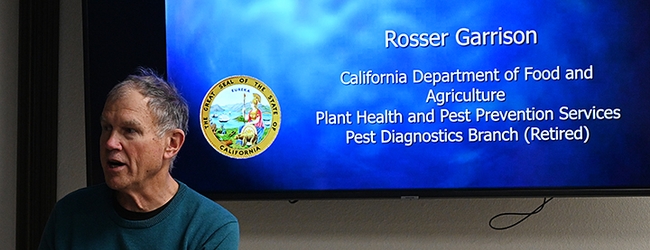
On her arm is a Cordulegaster diadema, aka Apache spiketail, and it's beautiful.
Anna, who didn't follow her father's footsteps into the field of entomology, instead has a dragonfly within arm's reach.
Anna, employed at Deluxe Studios (remotely), and her researcher father recently attended an insect-drawing class at the Bohart Museum of Entomology open house, "An Evening at the Museum." The class, taught by Professor Miguel Angel Miranda of the University of the Balearic Islands, Spain, a participant in the newly concluded 10th International Dipterology Congress in Reno, drew such comments as "So much fun!"
No tattoo for Rosser?
"Nope," said Rosser. "No tattoos on me. Just over 50,000 preserved dried Odonata specimens--over 3000 species--from all over the world here at home in Sacramento."
Three thousand different species...that's nearly half of the world's 6000 described species of dragonflies.
Rosser served as a senior biologist/entomologist for Los Angeles County from 1984 to 2004 before becoming a senior insect biosystematist with the CDFA Plant Pest Diagnostics Branch, Sacramento, where he identified orthopteroid, heteropteroid, other groups of invertebrates including mollusks. He currently enjoys working on Odonata at his home in Sacramento.
One of them is C. diadema, commonly known as the Apache spiketail ("spiketail" refers to the female's prominent ovipoistor). The adult is usually 74-88 millimeters long. "It ranges from southwestern United States to Mexico and Costa Rica," according to Wikipedia, which notes: "The back of the head is yellow to brown with yellow to black hairs, though some have been reported with a black head with white hairs. The first proximal segment of the legs are yellow. The thorax has two lateral stripes with a yellow stripe between them."
The Bohart Museum featured Garrison and his work at its November 2022 open house on dragonflies. He displayed “the largest dragonfly in the world," Petalura ingentissima, found in Queensland, Australia. Its wingspan can measure 160 mm. Among his other specimens: some of the world's smallest dragonflies, including Nannothemis bella, Perithemis tenera (both eastern United States) and Nannophya phymaea (Singapore).
Anna isn't the only one in the family who has dragonflies within an arm's reach!
The Bohart Museum, directed by UC Davis distinguished professor Lynn Kimsey, houses a global collection of nearly eight million specimens, including 469 different species of dragonflies. It is also the home of the seventh largest insect collection in North America, and the California Insect Survey, a storehouse of the insect biodiversity. Located in Room 1124 of the Academic Surge Building, 455 Crocker Lane, UC Davis campus., it is open to the public (summer hours) on Tuesdays from 2 to 5 p.m. Admission is free. More information on the Bohart Museum is available by contacting (530) 752-0493 or emailing bmuseum@ucdavis.edu.
Attached Images:
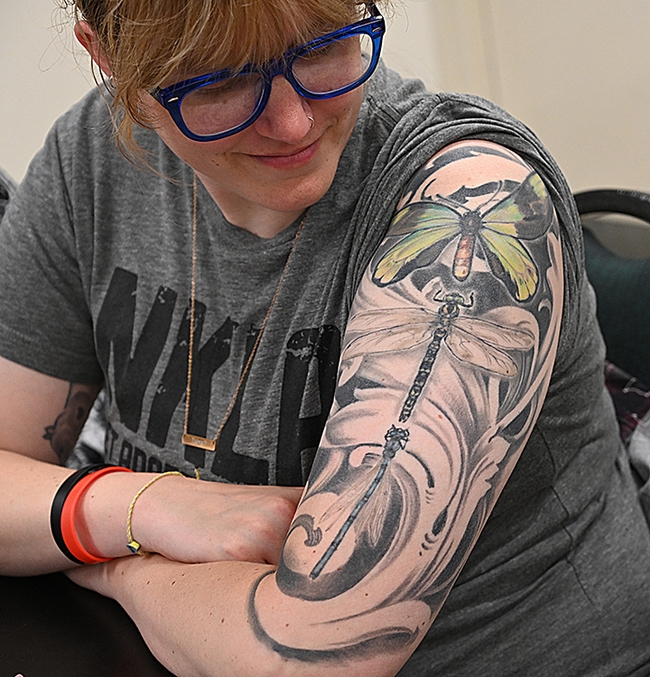
Anna Garrison's arm art: a tattoo of Cordulegaster diadema, aka Apache spiketail. The Sacramento resident is the daughter of noted dragonfly expert Rosser Garrison. (Photo by Kathy Keatley Garvey)
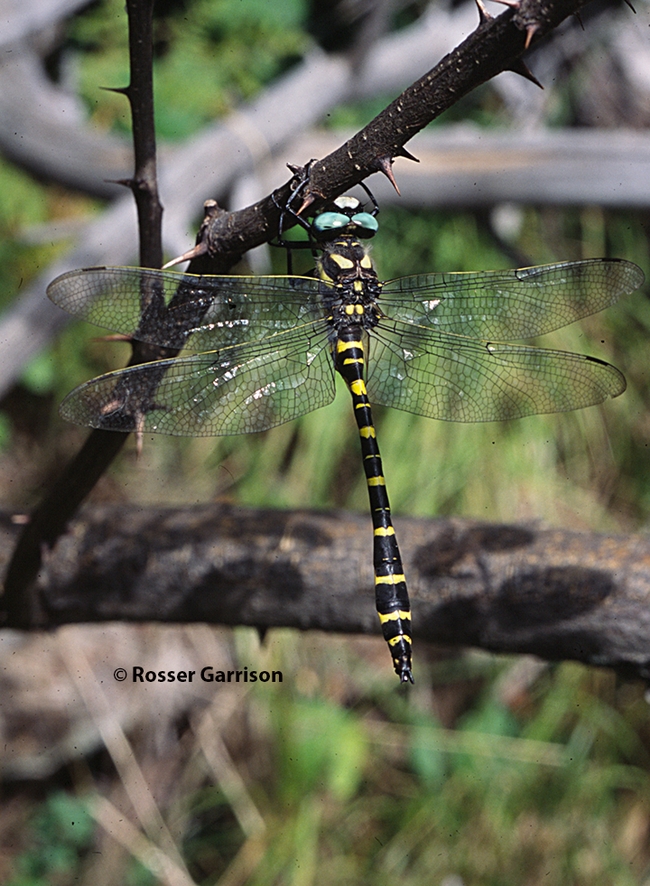
An image of Cordulegaster diadema, aka Apache spiketail. (Photo by Rosser Garrison)
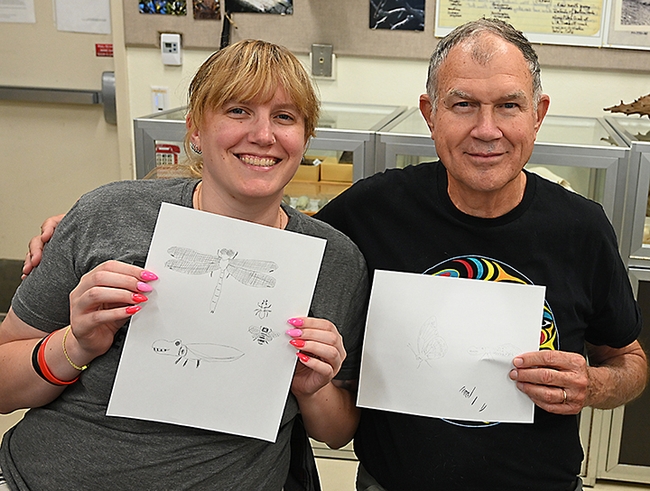
Rosser Garrison and his daughter, Anna Garrison, display their insect drawings. They participated in a class taught at a Bohart Museum of Entomology open house by Professor Miguel Angel Miranda of the University of the Balearic Islands, Spain. (Photo by Kathy Keatley Garvey)
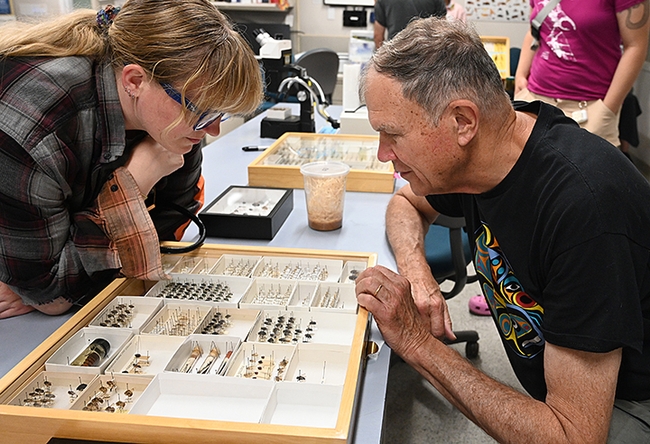
Rosser Garrison and his daughter, Anna Garrison, examine some of the specimens on display at the recent Bohart Museum of Entomology open house. (Photo by Kathy Keatley Garvey)